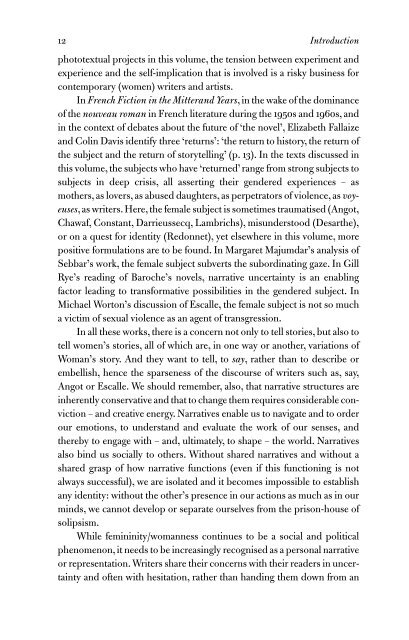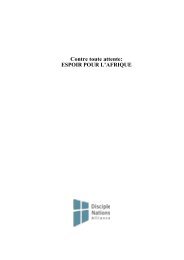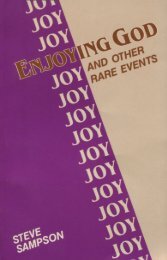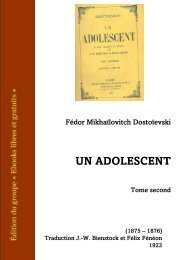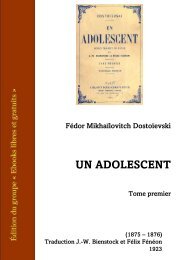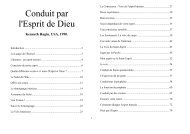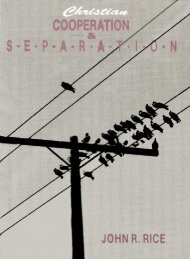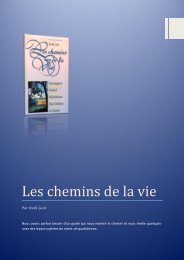Women writing in contemporary France
You also want an ePaper? Increase the reach of your titles
YUMPU automatically turns print PDFs into web optimized ePapers that Google loves.
12 Introduction<br />
phototextual projects <strong>in</strong> this volume, the tension between experiment and<br />
experience and the self-implication that is <strong>in</strong>volved is a risky bus<strong>in</strong>ess for<br />
<strong>contemporary</strong> (women) writers and artists.<br />
In French Fiction <strong>in</strong> the Mitterand Years, <strong>in</strong> the wake of the dom<strong>in</strong>ance<br />
of the nouveau roman <strong>in</strong> French literature dur<strong>in</strong>g the 1950s and 1960s, and<br />
<strong>in</strong> the context of debates about the future of ‘the novel’, Elizabeth Fallaize<br />
and Col<strong>in</strong> Davis identify three ‘returns’: ‘the return to history, the return of<br />
the subject and the return of storytell<strong>in</strong>g’ (p. 13). In the texts discussed <strong>in</strong><br />
this volume, the subjects who have ‘returned’ range from strong subjects to<br />
subjects <strong>in</strong> deep crisis, all assert<strong>in</strong>g their gendered experiences – as<br />
mothers, as lovers, as abused daughters, as perpetrators of violence, as voyeuses,<br />
as writers. Here, the female subject is sometimes traumatised (Angot,<br />
Chawaf, Constant, Darrieussecq, Lambrichs), misunderstood (Desarthe),<br />
or on a quest for identity (Redonnet), yet elsewhere <strong>in</strong> this volume, more<br />
positive formulations are to be found. In Margaret Majumdar’s analysis of<br />
Sebbar’s work, the female subject subverts the subord<strong>in</strong>at<strong>in</strong>g gaze. In Gill<br />
Rye’s read<strong>in</strong>g of Baroche’s novels, narrative uncerta<strong>in</strong>ty is an enabl<strong>in</strong>g<br />
factor lead<strong>in</strong>g to transformative possibilities <strong>in</strong> the gendered subject. In<br />
Michael Worton’s discussion of Escalle, the female subject is not so much<br />
a victim of sexual violence as an agent of transgression.<br />
In all these works, there is a concern not only to tell stories, but also to<br />
tell women’s stories, all of which are, <strong>in</strong> one way or another, variations of<br />
Woman’s story. And they want to tell, to say, rather than to describe or<br />
embellish, hence the sparseness of the discourse of writers such as, say,<br />
Angot or Escalle. We should remember, also, that narrative structures are<br />
<strong>in</strong>herently conservative and that to change them requires considerable conviction<br />
– and creative energy. Narratives enable us to navigate and to order<br />
our emotions, to understand and evaluate the work of our senses, and<br />
thereby to engage with – and, ultimately, to shape – the world. Narratives<br />
also b<strong>in</strong>d us socially to others. Without shared narratives and without a<br />
shared grasp of how narrative functions (even if this function<strong>in</strong>g is not<br />
always successful), we are isolated and it becomes impossible to establish<br />
any identity: without the other’s presence <strong>in</strong> our actions as much as <strong>in</strong> our<br />
m<strong>in</strong>ds, we cannot develop or separate ourselves from the prison-house of<br />
solipsism.<br />
While fem<strong>in</strong><strong>in</strong>ity/womanness cont<strong>in</strong>ues to be a social and political<br />
phenomenon, it needs to be <strong>in</strong>creas<strong>in</strong>gly recognised as a personal narrative<br />
or representation. Writers share their concerns with their readers <strong>in</strong> uncerta<strong>in</strong>ty<br />
and often with hesitation, rather than hand<strong>in</strong>g them down from an


